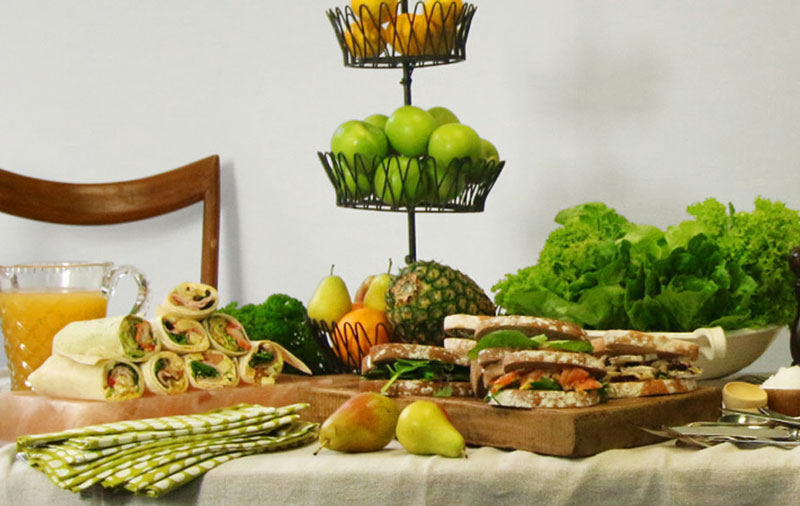Both the advertising industry and the public health sector agree that ‘unhealthy’ food should not be advertised to children. A key issue is defining ‘unhealthy’ and ‘healthy’.
A recent article in the NZ Medical Journal advocated that a nutritional profiling model developed by the European Regional Office of WHO should be adopted by the NZ Advertising Standards Authority (ASA) to determine which foods could be advertised to children.
“As an academic exercise the article is interesting but is hopelessly impractical in guiding parents to provide ‘healthy’ food for their children – it would be a mother’s nightmare,” says Foundation for Advertising Research director Glen Wiggs (in a report he says is getting “quite a bit of attention”).
Common foods consumed by children such as sandwiches are deemed ‘unhealthy’ by the article.
Background
The ASA is conducting a review of its Children’s Code for Advertising Food and appointed an independent committee to perform the review. A key question was whether there was a role for a nutrient profiling system to define which foods could be advertised to children.
There are two main profiling systems currently operating in New Zealand and if the independent committee adopts nutrient profiling it is expected that it will choose one of them. They are:
- The Ministry of Health Food & Beverage Classification System used by schools to determine which foods can be sold in school canteens, and
- The Health Star Rating System used in New Zealand and Australia for front-of-pack labelling that rates the healthiness of food on a ten-tier basis similar to hotel ratings.
It is important to note that both of these models are designed for New Zealand conditions. The NZ Medical Journal article ‘Protecting New Zealand Children from Exposure to the Marketing of Unhealthy Foods and Drinks: A Comparison of Three Nutrient Profiling Systems to Classify Foods’ by Cliona Mhurchu, Tara Mackenzie and Stefanie Vandevijvere of Auckland University was published last week.
It should be noted that the NZ Medical Journal is a closed media and the article is only available to the public at the considerable cost of $25.
The article compared the two New Zealand profiling systems with one designed by the European Regional Office of WHO for the purpose of restricting the marketing of foods to children in Europe. 13,066 food products were tested against each of the three profiling models to determine which foods were ‘healthy’.
Under the school canteen system 39% of the foods were categorised as ‘healthy’, under the Health Star Rating System it was 36% and under the European model it was 29%.
The authors conceded that ‘Use of any of the three systems would provide an objective, evidence-based classification system to identify foods suitable for marketing to children.’
However they recommended the European model as it ‘restricts marketing of unhealthy foods more effectively than the other two systems evaluated’. It seems that the recommendation is based on the assumption that the strictest system was the best.
In our view that assumption is wrong as it eliminates a large number of ‘healthy’ everyday foods that are an essential part of the diets of New Zealand children. The purported reason given in the article is both the school canteen and Health Star Rating systems include ‘a number of food products of concern, particularly high-sugar breakfast cereals, fruit juices and ready meals.’
Examples
Even a quick look at the European model reveals that it reflects a European diet. The two New Zealand models take into account New Zealand diets. We look at a few examples:
Dairy
The New Zealand models take into account the nutritional benefits of dairy products to a much greater extent than the European model. Indeed the model has a distinct bias against dairy products.
- Under the European model only 29.7% of the milks surveyed were found to be healthy compared with 78.5% under the Health Star Rating system and 40.6% under the school canteen system.
- Only 13.3% of cheeses were classified as ‘healthy’ under the European model compared with 22% under Health Star Ratings and 100% under the school canteen system.
- 26.4 % of yogurts were deemed ‘healthy’ under the European model but 53.8% under the Health Star Rating model and 75% under the school canteen system.
Processed Meats
Processed meats such as salami and sausages are popular products with Europeans and the European model takes this into account.
- 62.1% of processed meats were classified as ‘healthy’ under the European model but only 27.5% under the Health Star Rating system and 26.1% under the school canteen system.
Fruit & Vegetables
There are significant differences of opinion regarding semi-processed fruit and vegetables.
- A mere 1.1% of dried fruit products were found to be ‘healthy’ under the European model compared with 43.6% under the Health Star Rating model and 81% under the school canteen system.
- No fruit and vegetable juices were deemed ‘healthy’ by the European model but 61.8% are rated ‘healthy’ by the Health Star Rating model and 11.6% under the school canteen model.
Sandwiches
Sandwiches are an everyday food and a key item in children’s lunches. Mothers make literally hundreds and perhaps thousands of sandwiches for their children. We therefore decided to survey various sandwich options against the three systems.
We selected the sandwiches produced by Wishbone, which has retail outlets throughout New Zealand including hospitals.
None of the 17 different sandwiches currently on its website were deemed ‘healthy’ by the European model. But 16 of the 17 were rated as ‘healthy’ by one or both of the New Zealand nutrient profiling systems. We list below the various sandwiches and you will note that many are the type of sandwiches children eat and enjoy.
Sandwiches rated ‘healthy’ by the Health Star Rating system and/or the school canteen system but ‘unhealthy’ by the European model are …
- Smoked Salmon & Egg
- Chicken & Bacon
- Chicken & Almond (Gluten Free)
- Chicken & Almond
- Egg & Spinach (Gluten Free)
- Egg & Spinach
- Turkey & Cranberry
- Egg Ham & Cheese
- Chicken & Avocado
- Chicken & Brie
- Blue Cheese & Walnut
- Paleo Turmeric Chicken
- Paleo Spanish Chicken
- Beautiful Brie
- Roast Beef & Chutney
- Spring Chicken
The remaining sandwich Ham, Gruyere & Rocket was rated ‘unhealthy’ by all three systems
Comment
Clearly the recommended European profiling system is completely unrealistic and unsuitable for New Zealand children. Dairy products such as milk, yogurt and cheese plus sandwiches of various kinds are a part of a recommended ‘healthy’ diet for children.
The European system also lacks logic – When a parent gives a child an orange it is categorised as ‘healthy’ but if it is put in the juicer and consumed as a drink it becomes ‘unhealthy’.
We are of the view that if the ASA is to adopt a profiling system the New Zealand models that are designed for New Zealanders are better options than the impractical European model.
Glen Wiggs
Director
Foundation for Advertising Research
Share this Post



